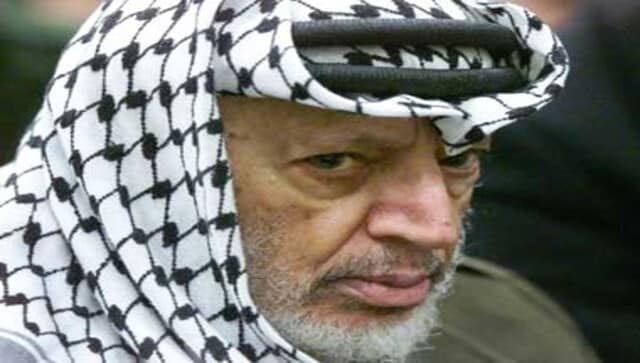Is a new intifada in Israel in the offing? After Palestinian youths hurled fire crackers at Israeli police, authorities raided the historic Al-Aqsa mosque– a highly sensitive site in Jerusalem sacred to both Islam and Judaism – in the early hours of Wednesday. Gaza militants responded with rocket fire on southern Israel – which in turn led to an airstrike from the Israelis. But what is an intifada? What does it mean? Let’s take a closer look: What is it? As per DW, the word is often loosely translated into English as a ‘rebellion’ or an ‘uprising’. But in Arabic it means to ‘shake off’. In this context, it specifically refers to the Palestinians rebelling against the Israelis in an attempt to create their own state. There have been two previous intifadas. First intifada The first intifada kicked off on 9 December, 1987. The catalyst was an accident at the Jabaliya refugee camp on the Gaza strip when four Palestinians were run over by an Israeli lorry. On 10 December, 1987, the victims were laid to rest. Meanwhile, violent clashes had erupted between the Israeli army and Palestinian demonstrators in eight camps. As per Vox, the intifada took the form of Palestinians boycotting Israel and refusing to work as well as throwing rocks, Molotov cocktails and using guns.
Around one and a half million people engaged in open conflict with Israel.
The Israelis responded by cracking down – hard. Then defence minister Yitzhak Rabin gave the order to ‘break bones’. Israeli troops responded by turning their automatic weapons on the protesters. [caption id=“attachment_12408502” align=“alignnone” width=“640”] Israeli Border Police are deployed near the Lions’ Gate to the Old City of Jerusalem during a raid by police at the Al-Aqsa Mosque compound, on Wednesday. AP[/caption] Meanwhile, Israel accused Syria, Iran and the Palestine Liberation Organisation (PLO) of fomenting the violence, but PLO leaders in exile were themselves taken by surprise. The intifada ended in September 1993 with the signing of the Oslo Accords in Washington between Israel and the PLO. The accords gave the Palestinians limited autonomy over the territories where they reside. On 24 September, the PLO ordered militants to halt their attacks. By then, 1,258 Palestinians had been killed in the conflagration – a quarter of them under the age of 16. Around 150 Israelis were also killed. Rabin the next year claimed between 120,000 and 140,000 people passed through Israeli prisons during the intifada. Rabin was assassinated in 1995 by a Jewish extremist opposed to the peace process. Second intifada The second intifada began in September 2000 after right-wing Opposition leader Ariel Sharon visited the Al-Aqsa mosque. The next day, the first Palestinians died in the conflict. An advisor to the Palestine Liberation Organization’s leader Yasser Arafat accused Sharon of sparking a ‘religious war’. This was an entirely different beast compared to the first one. As per Vox, this time the Palestinians resorted to suicide bombings, rocket attacks and sniper fire. [caption id=“attachment_12412082” align=“alignnone” width=“640”]
 PLO leader Yasser Arafat.[/caption] Hamas, founded during the first intifada, targeted Israeli civilians at bus stops, hotels and restaurants, as per DW.
PLO leader Yasser Arafat.[/caption] Hamas, founded during the first intifada, targeted Israeli civilians at bus stops, hotels and restaurants, as per DW.
In February 2001, Sharon became prime minister.
In March 2022, he led the biggest Israeli offensive in the West Bank since 1967, destroying the main section of the PLO’s headquarters. Arafat was confined to two rooms without electricity. Israel began building a security wall, and its army reoccupied nearly the whole of the West Bank. Palestinian activists were targeted and leaders in Islamist group Hamas killed and arrested as part of Israel’s “liquidation operations”. As per DW, some claim the demise of Yasser Arafat in November 2004 was the moment the second intifada ended. However, it is important to note that the attacks continued after his death. Others point to February 2005, with a joint announcement by Sharon and Mahmud Abbas, successor to the Arafat as the moment the second intifada concluded. In September 2005, Israel withdrew its last soldier from Gaza. As per Vox, the second intifada hardened Israel’s view on Palestine. The public support for the dovish argument – land in exchange peace – dimmed, as per Vox. Third intifada imminent? Some fear a third intifada might be imminent, but it isn’t a sure thing. Abu Mustafa, a fighter in the first intifada, told AFP for a third intifada to take place there has to be agreement among the factions. “But this is not the case: Hamas seeks international legitimacy, the left has grown weak, Fatah’s clinging on to power and Islamic Jihad is Islamic Jihad – it was ready yesterday, is ready today and will be ready tomorrow.” In December 2022, as Israel prepared for its most right-wing government headed by Benjamin Netanyahu to take over, outgoing public security minister Omer Bar-Lev warned of a ‘third intifada’ if ‘Ben Gvir manages to convince Netanyahu, or orders the police to change the behaviour of Israeli citizens on the Temple Mount’. Hamas in 2017 attempted to call a ‘third intifada’ after then US president Donald Trump moved the US embassy from Tel Aviv to Jerusalem. In October 2015, both sides were convinced that a third intifada was likely after violence left 18 Palestinians dead and 18,00 injured, as per Foreign Policy. Thankfully, it didn’t happen then. Let’s hope it doesn’t happen this time either. With inputs from agencies Read all the Latest News , Trending News , Cricket News , Bollywood News , India News and Entertainment News here. Follow us on Facebook, Twitter and Instagram.


)

)
)
)
)
)
)
)
)



